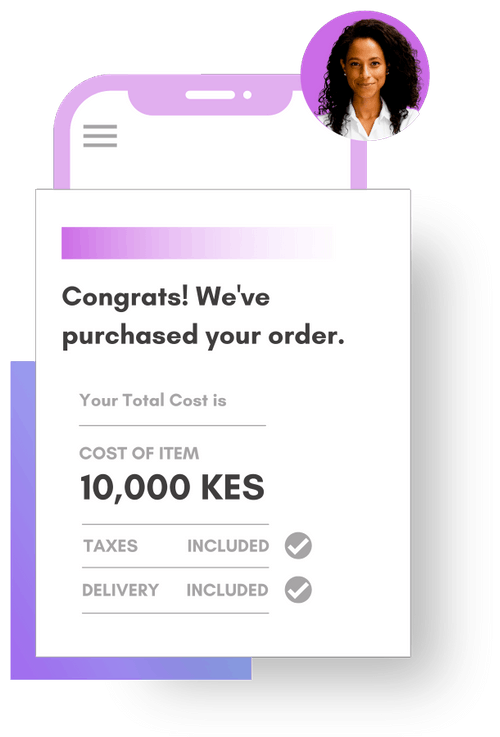There’s a lot to figure out when you launch an ecommerce business, from choosing your platform to planning your marketing strategy. Finding products to sell can be just as difficult and important, especially if you’re completely new the procurement process. After all, you’re not in business if you don’t have products to sell.
Ecommerce procurement doesn’t need to be a hurdle, however. With the right procurement process in place, sourcing inventory is more streamlined.
Find a Supplier
Finding a supplier is one of the most significant challenges you’ll face with procurement. The market is saturated with product sourcing sites, but you can’t always trust the seller or merchandise.
Products have labeling restrictions, however, so you have a shortcut – order one sample of a product you want to stock. Once it arrives, check on the label to see the website of the supplier. Now, you can find the supplier and reach out to them.
If you can’t make contact, leverage networking tools like LinkedIn. You can look for upper-level managers or directors and message them about product sourcing. This can be difficult, but it’s effective if you’re running out of luck elsewhere.
Do Your Due Diligence
Once you find a supplier, you have a lot more work to do. Any issues or problems are on you, and the products you stock reflect on your brand. In addition, you could fall victim to one of many scams.
If you can, meet with the supplier in person to ask questions. If that’s not an option, conduct research to learn about the company and its reputation. Here are some things to consider:
- Does the company seem trustworthy?
- Do you have references from current or past customers?
- Is the company a registered, verified business?
- Does the contact information match up across different platforms? Check phone numbers, emails, and addresses.
- Does the company have payment protection like PayPal?
- Is there a guarantee that the products you receive will be comparable to the sample?
- Are the products genuine?
- Are the products compliant?
This may seem like a lot of work, but the upfront effort can save you a lot of time, money, and hassle in the future.
Negotiate a Discount
A lot of suppliers have discounts or benefits built right in, but that doesn’t mean you can’t negotiate a better offer.
Suppliers often offer different types of discounts in addition to the wholesale price. Remember that if you’re unable to sell for the full retail price, that margin is thinner. Suppliers are understanding and may offer a variety of discounts, such as free shipping or a larger discount percentage.
Don’t be afraid to drive a hard bargain. You’re not going to jeopardize the relationship – the worst that happens is the supplier will counter or refuse. Without asking, you could just be leaving money on the table.
Gauge Demand
Choosing how much inventory to purchase and stock requires a good understanding of demand and volume, which may not be your forte when you’re just starting out.
You can get an idea of demand with Google Keyword Planner. This tool can show you what people are searching for related to your product. Conduct specific product names and words that indicate an intent to buy. If there aren’t a lot of keywords, that could mean there’s not great demand.
You can also look for sold items on eBay. Listings often include the number of items sold and alternatives, so you can get an idea of popularity and demand on the market.
Another option is searching for competitor product lines. You may not have the capital to stock a full line of products like your competitor, but you can see which products are stocked consistently. As you grow, you can expand your offerings.
If possible, order the same number of every product you’re looking to stock. As they sell, you can learn what’s most popular and make a note for future inventory purchases. Don’t go crazy buying everything, but try to get a good number of products to start.
List Products for Sale
The biggest hurdles of procurement are covered, so now you just need to list! Don’t take shortcuts now – your product images, descriptions, and other details are just as important as every other step.
Whether you are selling a product on eBay or your website, it’s important to make sure your images and product copy pop and entice your visitors to buy. Sell the product and make it sound as appealing as possible by focusing on the real-world benefits, not just its bells and whistles.
Don’t be in a rush. It’s better to list fewer items over a longer period, but correctly, than trying to get everything listed immediately. Your listing process should have just as much care and detail as the rest of the process.
Get Ready to Sell
Product procurement for an ecommerce business is no small task – it takes time, effort, and work. An effective procurement process can make or break your business, however, and once you set it up, you’ll have a smoother and more efficient process to keep your business running.
— Author Bio
Sidney Karanja
Sidney is the founder of Savo Store, a logistics and procurement services provider that works with corporations, start-ups, and nonprofits, to help them acquire and transport goods to their offices in Africa. Savo Store also operates a platform that allows individuals in Africa to shop hassle free at any U.S. retailer. Sidney founded Savo Store with the goal of eliminating some of the hurdles that plague cross-border transactions between Africa and the rest of the world
